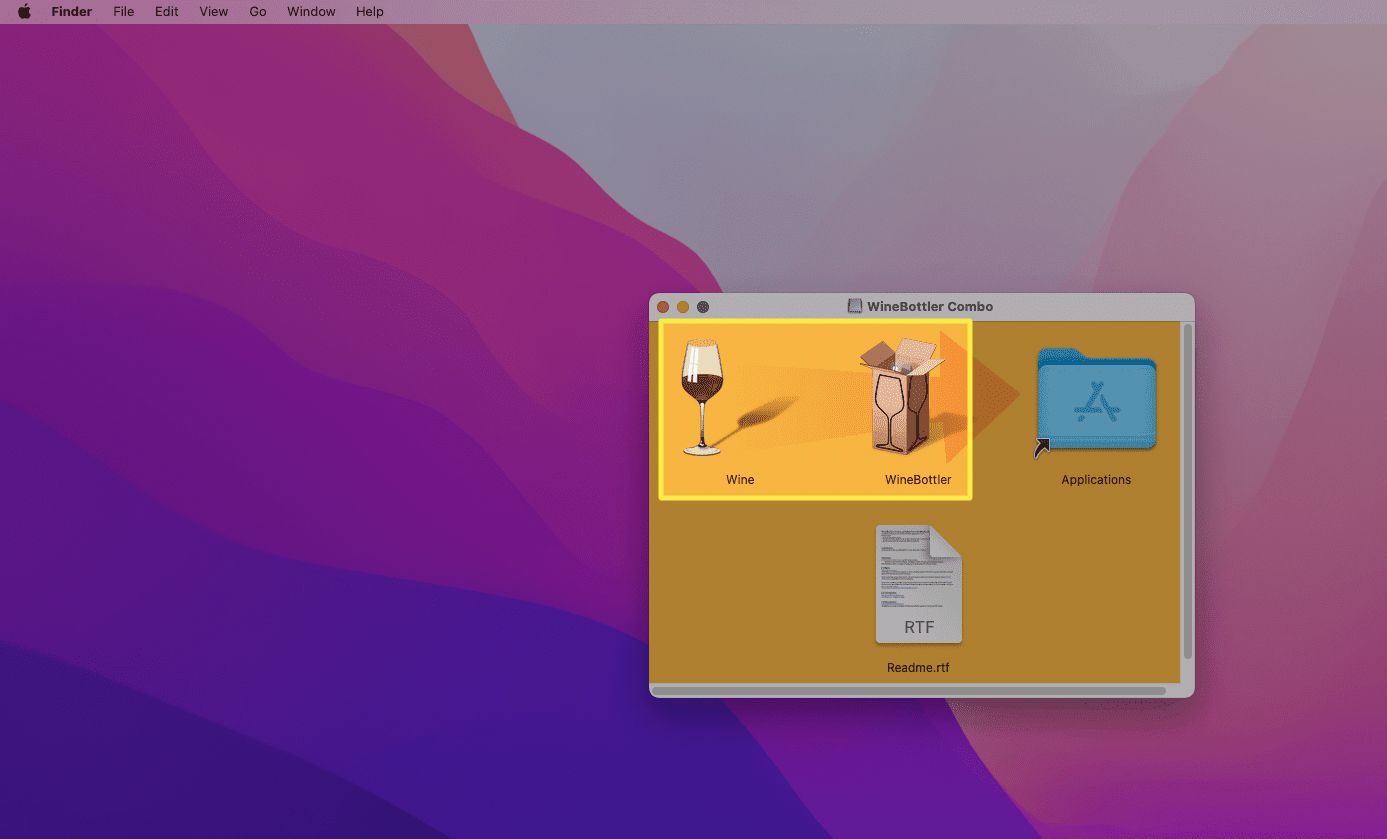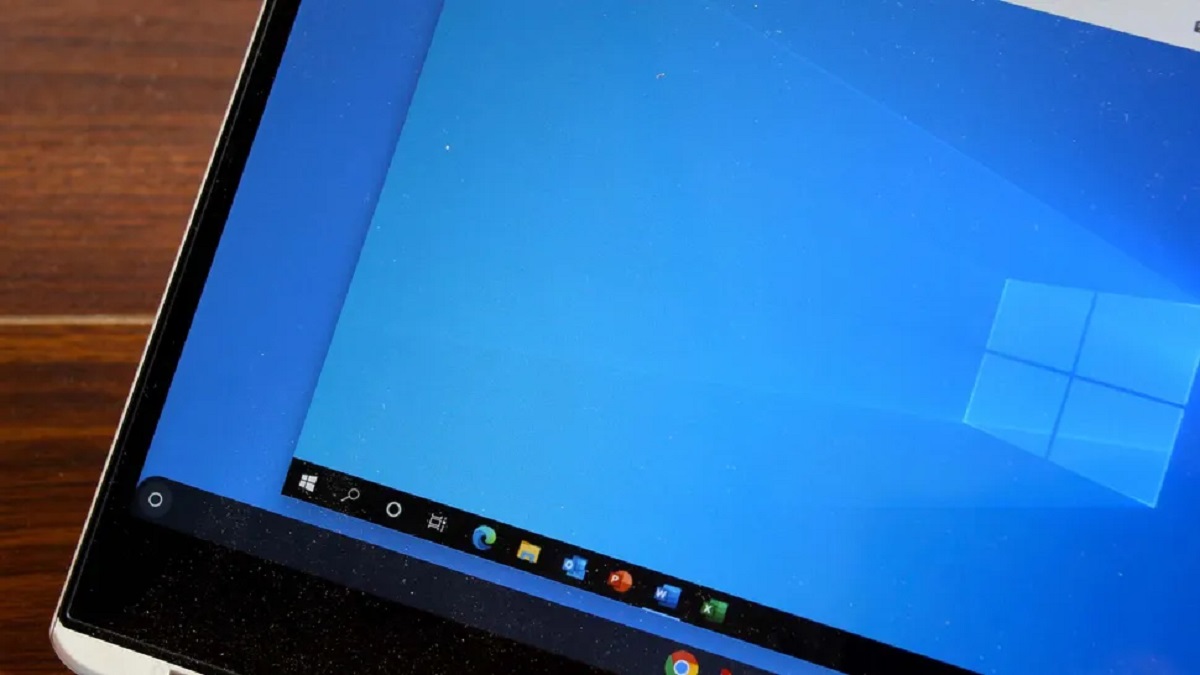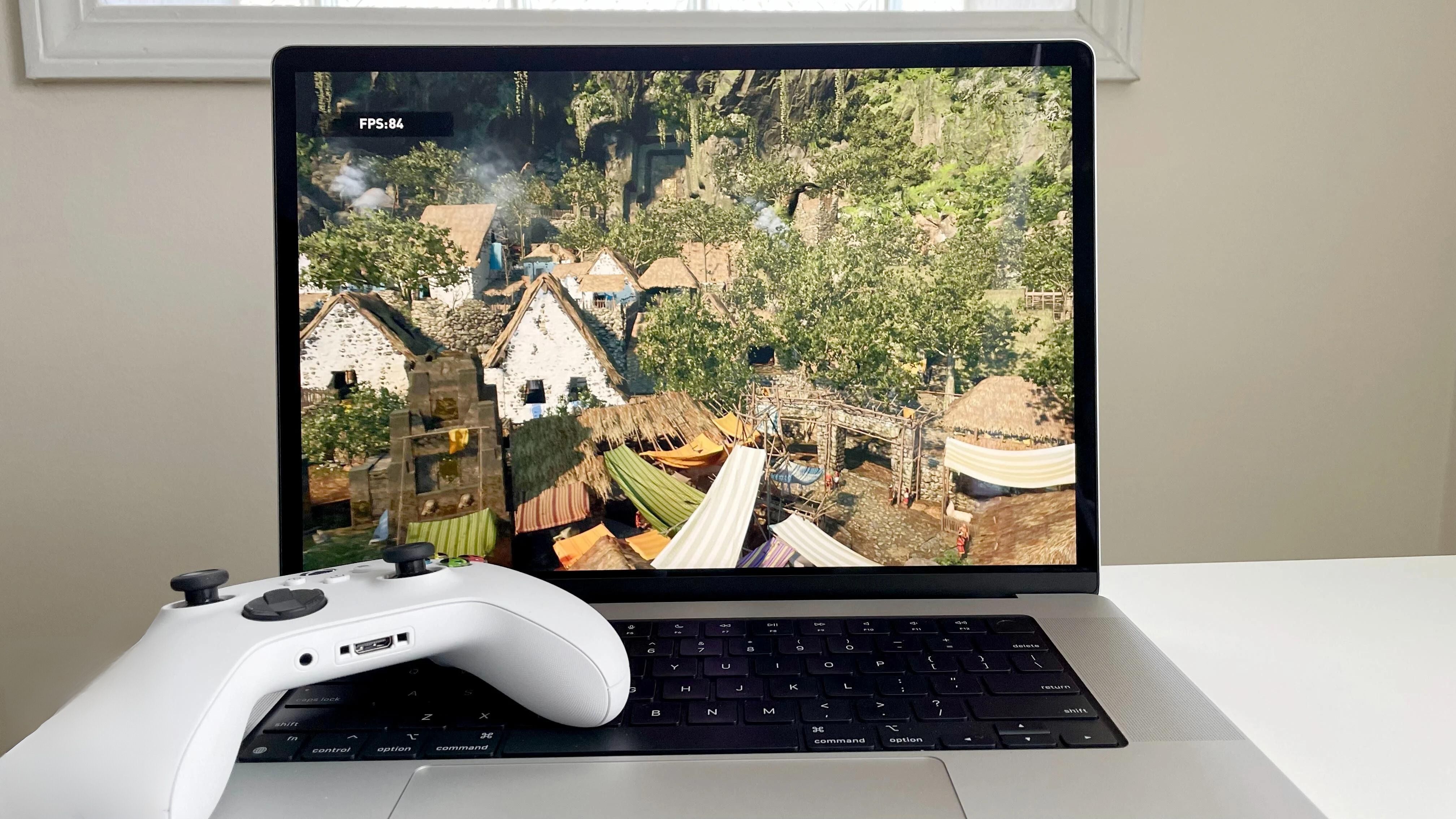Introduction
Downloading .exe files on a Mac can be a challenge, as .exe files are specifically designed to run on Windows operating systems. However, with the right tools and methods, it is still possible to download and use .exe files on your Mac machine. In this article, we will explore various options that allow you to download and run .exe files on your Mac.
Whether you need to run a Windows-specific application, play a Windows-only game, or simply have the need to access .exe files, there are several solutions you can consider. Each option has its own advantages and limitations, so it’s important to choose the one that best suits your needs.
We will cover the following options:
- Using a Virtual Machine
- Using Boot Camp
- Using Wine
- Using CrossOver
- Using PlayOnMac
Each of these options offers a unique approach to running .exe files on your Mac and comes with its own set of requirements and considerations. By exploring these options, you will be able to find the solution that works best for you.
Note that some options may require additional software or configurations to work. It’s important to carefully read through the instructions and understand the implications of each method before proceeding.
Now, let’s dive into the various methods for downloading .exe files on your Mac!
Option 1: Using a Virtual Machine
Using a virtual machine is a popular method for running Windows applications on a Mac. A virtual machine essentially creates a simulated Windows environment within your Mac operating system, allowing you to install and run .exe files seamlessly.
To use a virtual machine, you will need virtualization software like Parallels Desktop, VMware Fusion, or VirtualBox. These software programs create a virtual computer within your Mac, complete with its own operating system.
Once you have virtualization software installed, you can install a Windows operating system within the virtual machine. This can be a version of Windows that you already own, or you can use a free trial version provided by the virtualization software.
After setting up the virtual machine with Windows, you can simply download and install the .exe files like you would on a regular Windows computer. This allows you to access Windows applications and use them side-by-side with your Mac applications.
Keep in mind that using a virtual machine requires a significant amount of resources, as you are essentially running two operating systems simultaneously. Make sure your Mac has enough processing power, memory, and storage to handle both systems efficiently.
Additionally, virtual machines may not provide the same level of performance as a dedicated Windows machine. Some resource-intensive applications, such as high-end games or complex software, may not run smoothly on a virtual machine.
However, for most standard Windows applications, using a virtual machine is a reliable and convenient option. It allows you to maintain the functionality of your Mac while still accessing and using .exe files.
Now that you understand the basics of using a virtual machine, let’s move on to the next option.
Option 2: Using Boot Camp
If you’re looking for a more native Windows experience on your Mac, using Boot Camp is a viable option. Boot Camp is a utility built into Mac computers that allows you to install and run Windows natively alongside macOS.
To use Boot Camp, you will need a valid Windows license and a high-capacity USB drive to create a bootable Windows installation. Follow these steps to install Windows using Boot Camp:
- Open the Boot Camp Assistant, which can be found in the Utilities folder within the Applications folder on your Mac.
- Follow the on-screen instructions to partition your Mac’s hard drive for the Windows installation.
- Insert the USB drive and select the Windows ISO file to create a bootable USB installer.
- Restart your Mac and hold down the Option key to select the Windows installer from the boot menu.
- Follow the on-screen instructions to install Windows onto your Mac’s partition.
Once Windows is installed, you can boot into either macOS or Windows by holding down the Option key while restarting your Mac. This allows you to choose which operating system to use. When running Windows through Boot Camp, you can download and run .exe files just like on a regular Windows computer.
One advantage of using Boot Camp is that it provides the best performance for Windows applications on a Mac since it runs natively. You can fully utilize your Mac’s hardware capabilities without the overhead of running a virtual machine.
However, keep in mind that using Boot Camp requires you to reboot your Mac every time you want to switch between macOS and Windows. This inconvenience might not be ideal if you need to frequently access both operating systems.
Also, note that Boot Camp only supports Windows officially. While there are ways to install other operating systems using Boot Camp, it is primarily designed for Windows.
With Boot Camp, you have a dedicated Windows installation on your Mac, allowing you to fully utilize .exe files and Windows applications with optimal performance.
Now that you are familiar with Boot Camp, let’s explore another option for downloading .exe files on your Mac.
Option 3: Using Wine
If you’re looking for a lightweight and flexible solution to run .exe files on your Mac without the need for a virtual machine or dual booting, using Wine is worth considering. Wine is a compatibility layer that allows you to run Windows applications on macOS without requiring a full installation of Windows.
Wine stands for “Wine Is Not an Emulator.” It provides a compatibility layer that translates Windows system calls into equivalent macOS system calls, allowing Windows applications to run directly on your Mac.
To use Wine, you will need to install the Wine software on your Mac. There are two main options for installing Wine:
- Homebrew: If you are familiar with Homebrew, a package manager for macOS, you can use it to install Wine by running a simple command in the Terminal.
- WineBottler: WineBottler is an easy-to-use tool that simplifies the installation of Wine and allows you to run Windows applications by creating standalone macOS applications.
Once you have Wine installed, you can download the .exe file you want to run. Simply right-click on the file, select “Open With,” and choose Wine as the application to open the file.
It’s important to note that not all Windows applications are fully compatible with Wine. Some applications may require additional configurations or dependencies to work properly. The Wine website and community forums provide valuable resources and information on running specific applications with Wine.
While Wine offers a convenient solution for running individual .exe files without the need for a virtual machine or dual booting, it may not provide the same level of performance as native Windows or virtual machine installations. Resource-intensive applications or those with advanced graphics capabilities may not run as smoothly.
However, Wine is continuously being improved and updated by an active community of developers, and many Windows applications can be successfully run on a Mac using Wine.
Now that you have an understanding of using Wine, let’s explore another option for downloading .exe files on your Mac.
Option 4: Using CrossOver
If you’re looking for a more user-friendly and supported option to run .exe files on your Mac, using CrossOver is an excellent choice. CrossOver is a commercial software developed by CodeWeavers that allows you to install and run Windows applications on your Mac seamlessly.
CrossOver is built on the Wine compatibility layer but offers additional features and support to make the process of running .exe files easier and more reliable. It provides a simple and intuitive interface that guides you through the installation of Windows applications.
To use CrossOver, you will need to purchase and download the software from the CodeWeavers website. Once installed, CrossOver allows you to install a wide range of Windows applications directly on your Mac without the need for a Windows installation or virtual machine.
The advantage of using CrossOver is that it offers a curated list of supported applications, ensuring that popular Windows software has been thoroughly tested and optimized for use on macOS. This increases the chances of successfully running your desired .exe files without encountering compatibility issues.
CrossOver also provides a collection of pre-configured “bottles” that contain specific settings and dependencies for running different types of Windows applications. This simplifies the installation process and minimizes the need for manual configuration.
If a particular Windows application is not officially supported by CrossOver, you can still attempt to install it by using a custom setup. The CrossOver community and support forums offer valuable resources and tips on troubleshooting and optimizing the compatibility of unsupported applications.
While CrossOver offers a convenient and user-friendly solution for running .exe files on your Mac, it is worth noting that it is a commercial software, and some applications may require additional licenses or specific versions to work properly.
With CrossOver, you can enjoy the convenience of running Windows applications on your Mac without the need for a virtual machine or dual booting.
Now that you are familiar with CrossOver, let’s explore our final option for downloading .exe files on your Mac.
Option 5: Using PlayOnMac
If you’re looking for a free and user-friendly solution to run .exe files on your Mac, PlayOnMac is a great option. PlayOnMac is an open-source software that enables you to install and run Windows applications on your Mac without the need for a virtual machine or Windows installation.
PlayOnMac is built on the Wine compatibility layer and provides an easy-to-use interface that simplifies the installation process of Windows applications. It comes with a wide range of pre-configured scripts that automatically handle the installation and optimization of popular Windows software.
To use PlayOnMac, you will need to download and install the software from the PlayOnMac website. Once installed, PlayOnMac allows you to easily install and manage various Windows applications, including games, productivity tools, and more.
One of the advantages of using PlayOnMac is its extensive compatibility database, which provides information on which applications have been tested and known to work well with PlayOnMac. This information helps ensure a smoother installation and operation of your desired .exe files.
If a specific application is not listed in the PlayOnMac compatibility database, you can still attempt to install it by using custom scripts or manual configurations. PlayOnMac provides a community forum where users can share their experiences and get assistance with running unsupported applications.
It’s important to note that while PlayOnMac is an excellent tool for running .exe files on your Mac, there may be some limitations. Certain resource-intensive applications or those with complex dependencies may not run as smoothly as they would on a dedicated Windows machine.
PlayOnMac constantly improves and updates its software, ensuring that users have the latest compatibility improvements and bug fixes. It provides a user-friendly experience for running Windows applications on your Mac without the need for advanced technical knowledge.
Now that you are familiar with PlayOnMac, let’s summarize the various options we’ve explored for downloading .exe files on your Mac.
Conclusion
Downloading and running .exe files on a Mac can be a challenge, as .exe files are primarily designed for Windows operating systems. However, with the options we’ve explored in this article, you can find a solution that fits your needs and allows you to access and use .exe files on your Mac.
If you’re looking for a complete Windows experience on your Mac, using a virtual machine or Boot Camp is the way to go. These methods provide the most compatibility and performance for running Windows applications, but require additional resources and configuration.
For a more lightweight option, you can use Wine or CrossOver. These tools utilize the Wine compatibility layer to run .exe files on your Mac without the need for a full Windows installation. Wine is free and versatile but may require additional tinkering, while CrossOver offers a user-friendly experience with a curated list of supported applications.
If simplicity and ease of use are your priorities, PlayOnMac is an excellent choice. It provides a user-friendly interface and a vast list of pre-configured scripts, allowing you to install and run a wide range of Windows applications on your Mac.
It’s important to consider the compatibility and performance implications when choosing the right method for running .exe files on your Mac. Each option has its own advantages and limitations, so it’s crucial to assess your specific needs and technical requirements.
Remember to also check the system requirements for the Windows applications you wish to run, as some resource-intensive applications may not perform optimally on your Mac hardware.
By exploring the options discussed in this article, you can find the best approach for downloading and using .exe files on your Mac, allowing you to access a broader range of software and applications.
Now that you’re equipped with these insights, you can choose the method that suits you best and enjoy a seamless experience of running .exe files on your Mac.

























